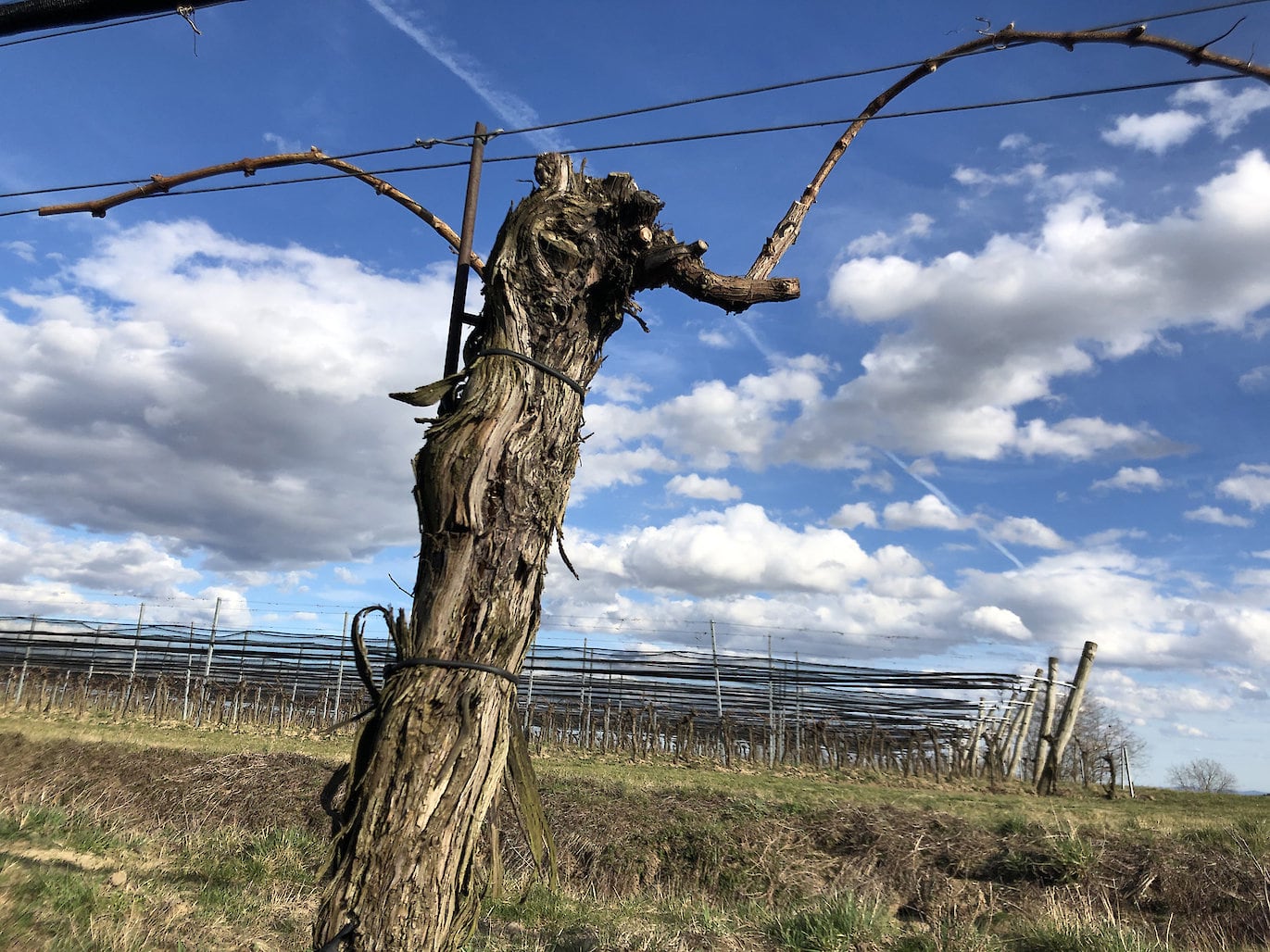Wine Diary
Firm Bonds
We are getting towards the end of pruning season! Some terraces on Heiligenstein are still waiting for their trim. Younger vineyards are generally pruned rather late, simply because after a possible frost, we would have more alternatives for correction, i.e., getting the right amount of buds. More time is generally dedicated to the young vines and the instruction of our team, as the early building of the vines, for example, following the principles of sustainable pruning, is crucial for their later productive and hopefully long life.
After pruning, binding is the most important work in the vineyards. Here, the shortened vine-shoot is bent down and bound to the wire. Now, what sense do we pursue with this work? Vines are lianas and follow the principle of acrotony, meaning that all energy is fed to the tips of the plant. Wild forms grow in the woods and used to grow up around trees or cling to the branches to get to the sunlight. In order to prevent all energy being concentrated only outwards, we form an arched shoot with the tip bent down and fixed onto the trellis. Thus, the juice and all its energy will be spread evenly to all buds favoring their growth.
In some parts of Europe’s wine areas, we still encounter a special form of wicker nearby the vines. They themselves are pruned regularly to get thin and soft shoots. After those shoots have been soaking in water, they are tender and flexible and give good binding material. In our vineyards we use iron wires to fix shoots. Over the course of the years, old wire clippings fall to the ground where they further oxidize. Ferric oxide together with the decaying wood of the vines are valuable assets for maintaining soil fertility.
